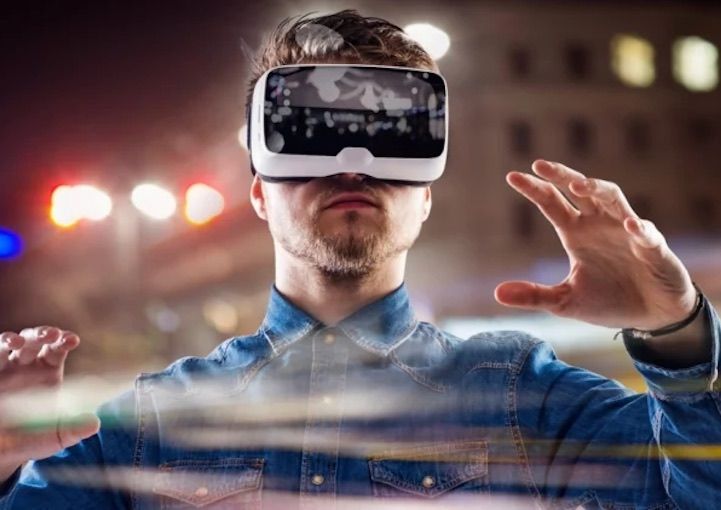INSTANT ON NOW AVAILABLE - Experience Time to first frame as quick as 2 SECONDS
Does Photo-Real 3D for Business Need VR or Real-Time Mobile Access?

We're in the land of science fiction now or at least what science fiction was a few short decades ago. I find myself talking to my wristwatch like Dick Tracey and talking about 3D printed food as seen in Star Trek bars. Some things are practical, some are just cool, but all would blow people away from the year I was born (which was a few long decades ago).
Most impressively, we can now fool the most powerful computers on the planet - our brains - into thinking something is real that, well, isn't. We do this by hijacking our computer input systems - our eyes & ears - in effect cutting them off from the real world. There are efforts on other senses like touch and even smell, but audio and video get us most of the way there. So this works, kind of, at least for awhile.
So, where does this fit on the 'very practical' to 'simply cool' scale? Well, let's start with the most obvious use: games.
This should be the strongest argument for VR, but there is still a big debate raging on. In fact, a recent headline in my inbox showed the two biggest console manufacturers in the world aren't even on the same page.
Microsoft just claimed that "nobody's asking for VR", while Sony respectfully disagrees.
Why? Many people simply blame slow adoption on cost, but the way people play games also doesn't match with VR in most cases.
Players spend hours, seated, watching the screen, controlling their world with micro movements of their fingers as fast as possible. VR asks a lot more of the player, starting with wearing something over your head that doesn't let you out of the game. If you have to move more to interact, even just your hands, game time will be limited due to fatigue. And there's the whole biology thing where any disconnect between what your eyes are seeing and what your inner ear is sensing will result in uneasiness, from it simply not feeling right, to outright nausea.
Related Read: How PureWeb built an enterprise 3D streaming and collaboration platform
Then there is the concept of immersion. This is similar to the 4th wall in cinema where characters sometimes turn to the camera and break the barrier between them and the audience. It's not used often, probably because people want to watch, not participate in the action. In gaming, do people really want to be in the game, or simply control it at a comfortable distance, like say an arm's length from the screen?
Beyond games, there is also an explosion of use cases for game technology from training simulation to shopping online to touring a virtual show home. Even though it's used by businesses to either increase sales and cost-efficiencies as well as improve productivity or safety rather than pure entertainment, the same question applies: does VR make it better?
As always, it depends - sometimes it enhances the experience and other times it actually detracts. Again, it's a bigger ask of the user. This can limit time spent training or distract them from whatever they're trying to buy, whether that be configuring their dream home or their next car.
I'm trying to avoid the usual argument that VR isn't adopted because of cost because, if the value is there, people will pay the price. And VR has a range of costs and capabilities, from fully immersive environments with motion capture sensors and high powered GPU's to lower rent cardboard approaches.
We'll stay focused on the high-end options because with anything limited or low quality, much like WebGL and other approaches to deploying 3D for smaller, low fidelity models downloaded slowly to your device, the virtual reality experience doesn't feel, well, real.
It may sound like we're not fans of VR, but that's not the case. We simply have real world problems to solve and we use the most appropriate technology to solve them. In fact, we're big supporters of what people are doing with VR because, whether it's used within a headset or not, it's generating an explosion of real-time 3D content that people can use in everyday scenarios - for both work and play.
This is especially true in the enterprise world, where our partners at Epic Games and Unity are seeing a steady stream new use cases leveraging real-time 3D rendering. Many of their customers like Audi and Chevrolet start by creating fully immersive experiences in VR, and then use the same content to deliver a seamless, realistic car buying experience online.
The same is true for other big purchases, from buying homes to simulating potentially dangerous situations like safety training on oil rigs or mines. It's the same quality content and photo-real 3D experience, brought to everyone who wants to buy or train, without the cost and inconvenience of traveling somewhere to put on a VR headset.
We've found that "games" for enterprise, including 3D configurators and ultra-realistic simulators, are powerful experiences to emulate the real world.
People like the realism and their intuitive controls, but VR might be just one step too far.
By simply changing the controls to the more familiar mouse, keyboard or, as in most common interactions today, mobile touch screens, users are more comfortable and even excited to "play" whatever job, or interact with and visualize their dream purchases - all delivered to the screens and devices they already use everyday, whatever the size.
We believe that all takes on technology are valid, it just depends on using the right tool for the job. We're familiar with WebGL and it can be useful, but only in use cases where small models and long download times are an acceptable user experience.
We have VR headsets, but we use them less than you'd think, simply for practical reasons. When we need to access a full 3D model, we simply grab our PC's or phones and let the cloud do the work. And with the growth in computing power and the increase in cloud cover around the world, interactive 3D cloud rendering and streaming can now deliver a realistic experience into the hands of anyone, at a much lower cost.
While the debate about VR and its potential will rage on, we're excited that the amazing technology used to create those immersive 3D worlds can be used in a very practical way in our everyday world and mobile devices right now.


